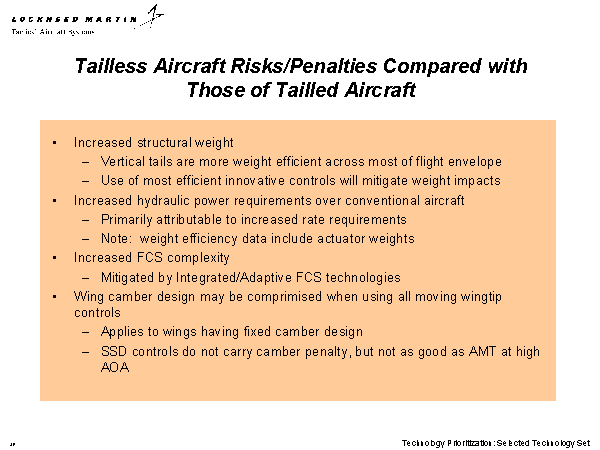Slide 29 of 58
Notes:
This chart addresses risks and penalties of tailless aircraft when compared to conventional tailed aircraft. Penalties of choosing a tailless configuration include:
- Increased structural weight - A vertical tail and rudder are still the most weight efficient directional control and stabilization device for most of the flight envelope (see previous slide).
- Increased hydraulic power requirements - Primarily this increase is caused by increased actuator rate requirements of the innovative effectors.
- Increased FCS complexity. A tailless design incorporating innovative controls drives the configuration to include the integrated/adaptive flight control algorithms to mitigate the complexity involved with using traditional control design philosophies.
- Integration of innovative controls may compromise wing camber design on some configurations. This depends on planform and mission, and applies to wings having no leading-edge flaps. Note that the spoiler-slot-deflector controls do not carry this penalty.















